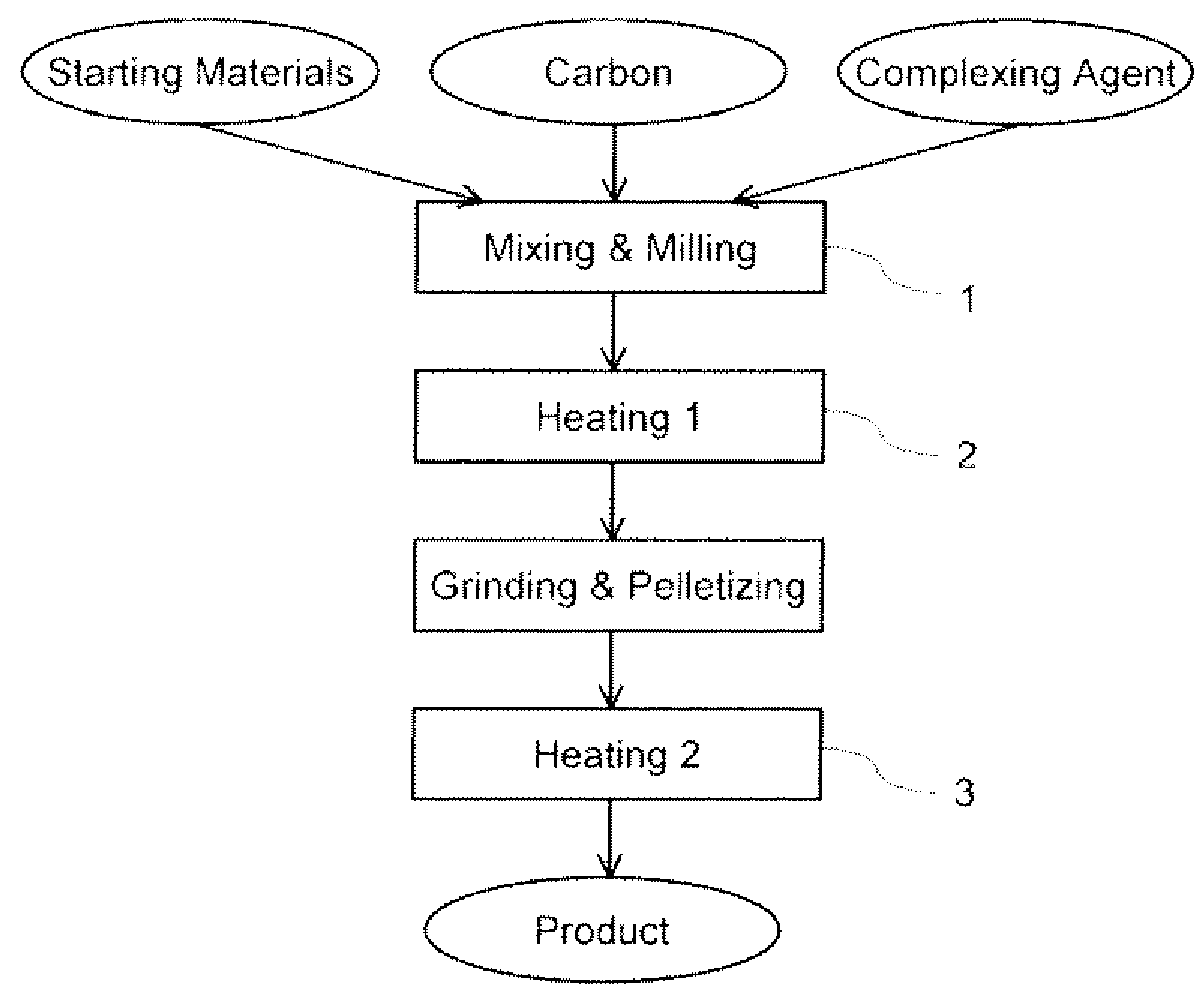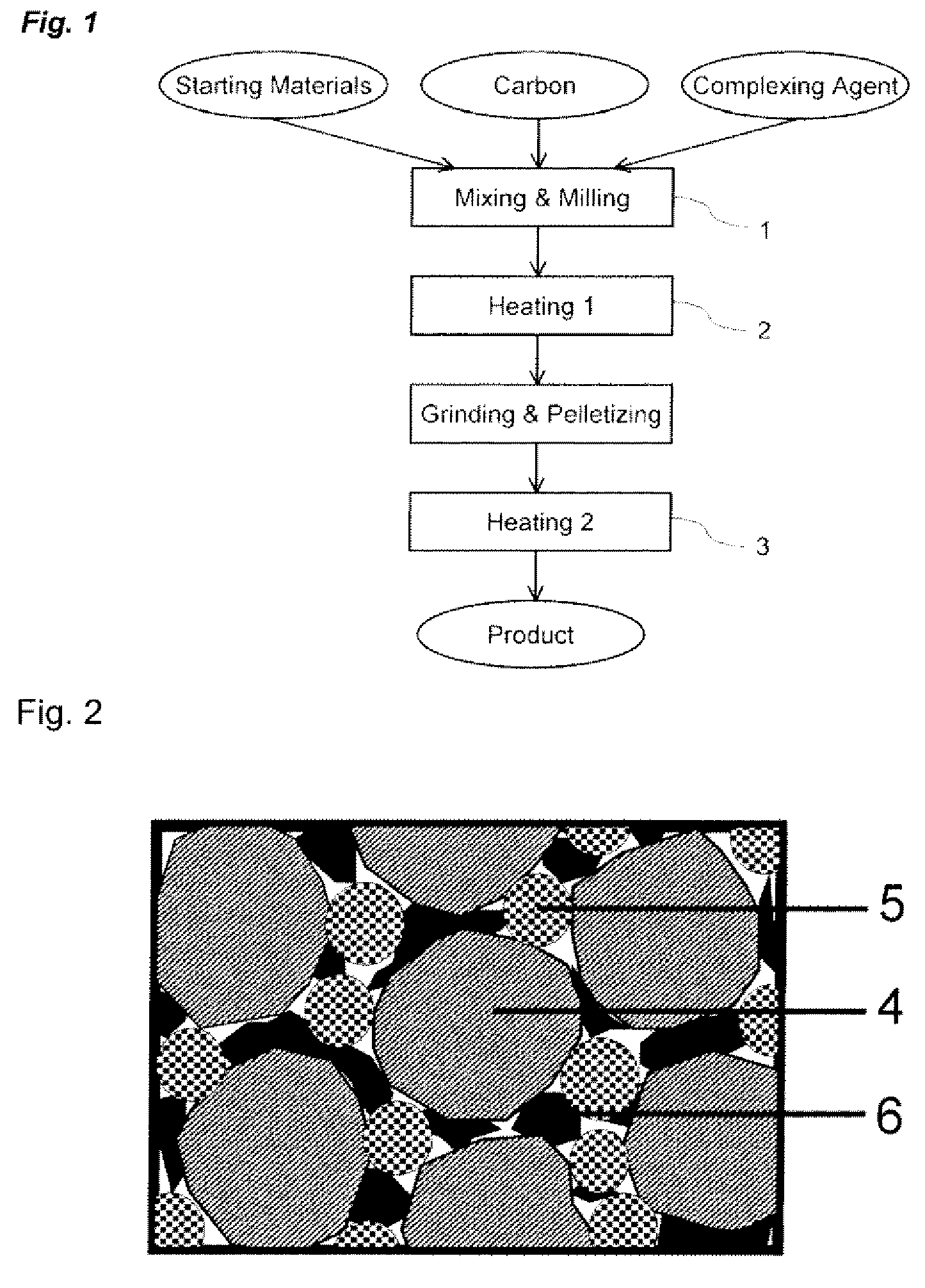Method of preparing a composite cathode active material for rechargeable electrochemical cell
a cathode active material and active material technology, applied in the field of cathode active material, can solve the problems of low electronic conductivity, high cost, toxic transition metal, etc., and achieve the effect of cost-effectiveness
- Summary
- Abstract
- Description
- Claims
- Application Information
AI Technical Summary
Benefits of technology
Problems solved by technology
Method used
Image
Examples
examples
[0034]Three LiFePO4—C composites were prepared by using the formulation listed in Table 1, in which Li, Fe, and P were in a molar ratio of 1:1:1. Samples A and B were prepared for the purpose of comparison, where Sample A did not use citric acid whereas Sample B did not use carbon.
[0035]
TABLE 1Feeding formulation of the starting materials for the preparationSample #ABCLiH2PO499%, Aldrich10.39 g10.39 g10.39 gFeC2O4•2H2O99.999%, Alfa17.99 g17.99 g17.99 gCarbon*Cabot 0.82 g 0 g 0.49 gCitric acid99.5%, Aldrich 0 g19.21 g19.21 gFeed ratio**C = 5%Li / acid = 1:1C = 3%Li / acid = 1:1*Carbon is Black Pearls ® 2000.**Carbon content is a weight percentage versus the theoretical weight of LiFePO4, and Li / acid ratio is a molar ratio.
[0036]All starting materials were mixed and ball-milled for 3 hours, and then the mixture was transferred to a tubular furnace. Under a flow of nitrogen to protect Fe(II) from being oxidized by oxygen in air, the mixture was heated at a rate of 10° C. / min to 380° C....
PUM
| Property | Measurement | Unit |
|---|---|---|
| temperature | aaaaa | aaaaa |
| temperature | aaaaa | aaaaa |
| molar ratio | aaaaa | aaaaa |
Abstract
Description
Claims
Application Information
 Login to View More
Login to View More - R&D
- Intellectual Property
- Life Sciences
- Materials
- Tech Scout
- Unparalleled Data Quality
- Higher Quality Content
- 60% Fewer Hallucinations
Browse by: Latest US Patents, China's latest patents, Technical Efficacy Thesaurus, Application Domain, Technology Topic, Popular Technical Reports.
© 2025 PatSnap. All rights reserved.Legal|Privacy policy|Modern Slavery Act Transparency Statement|Sitemap|About US| Contact US: help@patsnap.com



